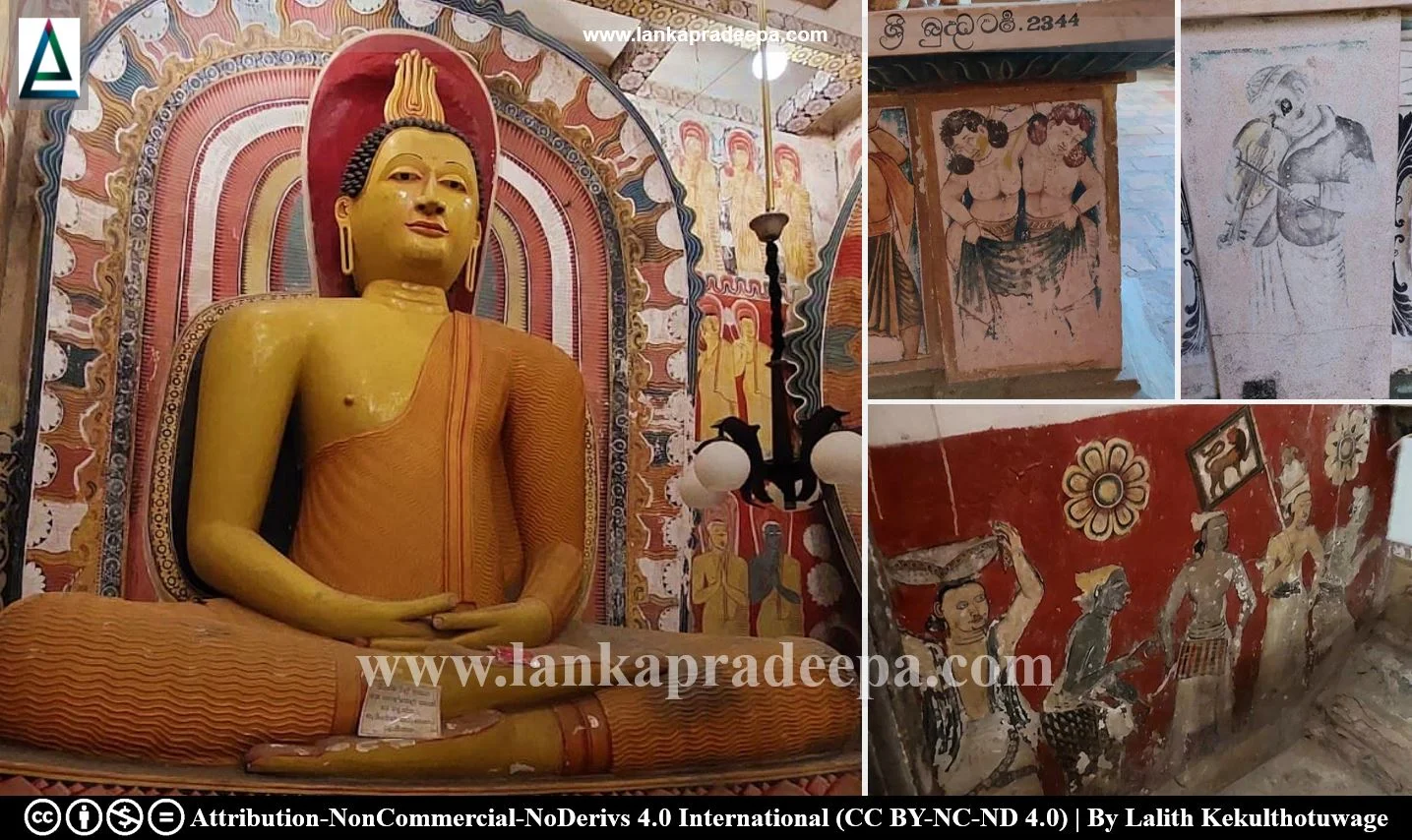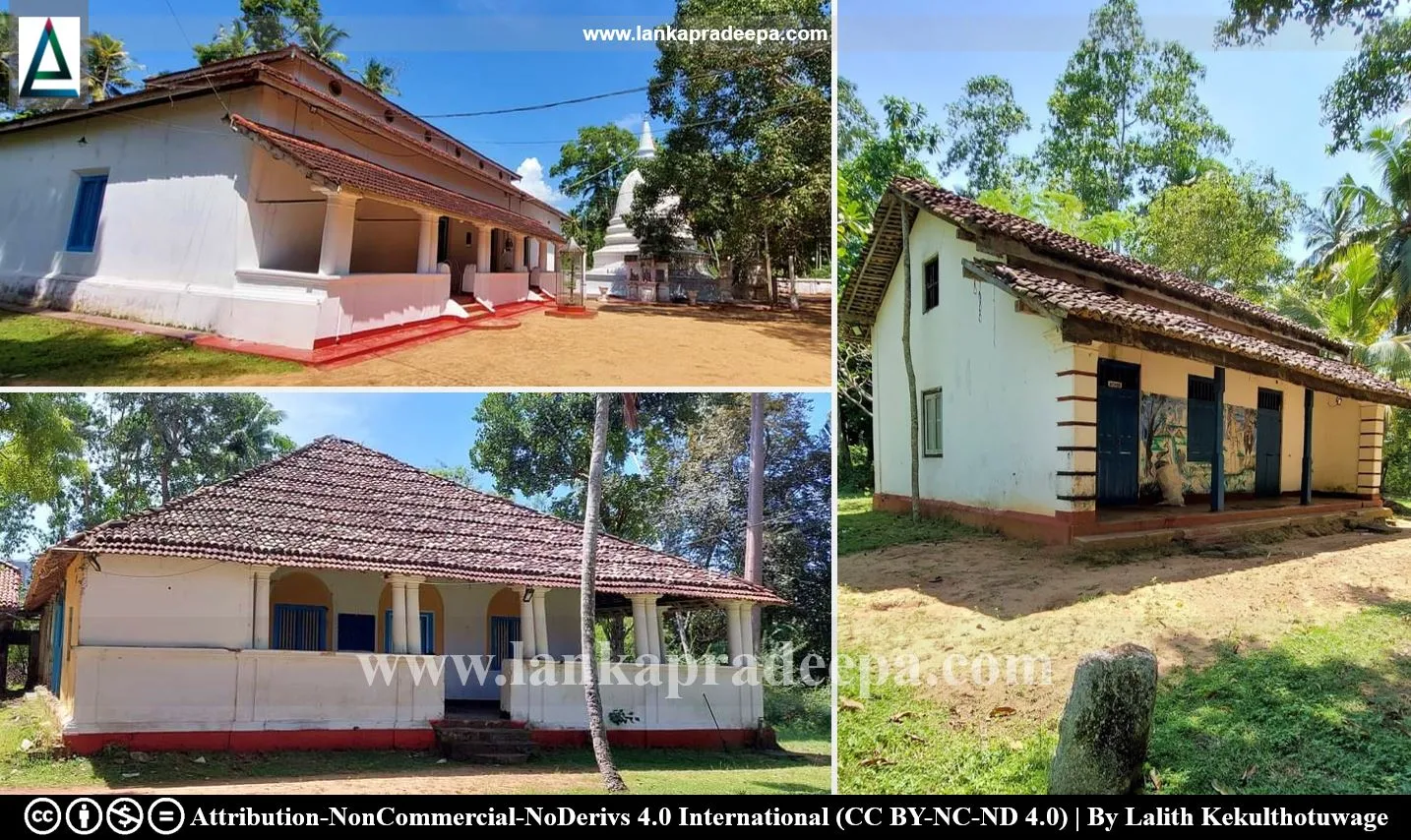
Gangarama Maha Viharaya (Sinhala: පොල්වත්ත ගංගාරාම මහා විහාරය) is a Buddhist temple in Polwatta village near Weligama town in Matara District, Sri Lanka. It is situated on the bank of the Polwatta Ganga River close to Weligama Bay.
History
Gangaramaya, the name of the temple is derived from its location on the bank of a river. It is believed that this temple was established by a general named Swaraja Kulawardhana Devadhikari (or Ayasmanta) during the reign of Queen Kalyanavathi (1202-1208 A.D.) of Polonnaruwa (Wikramaratne, 2015). The small Stupa at the site is thought to be a construction of him (Wikramaratne, 2015). The temple received the patronage of King Kirti Sri Rajasinha (1747-1781 A.D.) of Kandy when he donated the Polwatta land to it to provide coconut oil required to Weligama Agrabodhi Vharaya (Wikramaratne, 2015).
Image house

The image house of Gangarama Viharaya preserves a collection of valuable paintings belonging to the Kandyan Period (Abeyawardana, 2004). It consists of two sections; the outer and the inner chamber. The inner chamber has three entrances decorated with Makara Thorana (dragon arch). The Kihimbi Muhuna, the central face that is usually used in every Makara Thorana is not found in Gangarama temple and has been replaced with lion faces (Wikramaratne, 2015). Also, there are several rafters on the roof ending with the faces of lions. Sculptures depicting the Suvisi Vivaranaya (Buddha to be receiving the blessing from 24 previous Buddhas) are found positioned along the outer walls of the inner chamber.
A recumbent Buddha statue about 44 ft. long flanked on either side by two Buddha statues in sedent posture is found accommodated in the inner chamber along with the statues of Visnu and Kataragama and murals depicting 80 disciples (Abeyawardana, 2004; Wikramaratne, 2015). Of the paintings, the one showing the alms procession is considered important as it contains a lion flag (Abeyawardana, 2004; Wikramaratne, 2015). This flag is said to be one of the earliest depictions of the present Lion Flag of Sri Lanka (Wikramaratne, 2015).
The outer chamber painting have been retouched around 1920 altering its original features (Abeyawardana, 2004). The roses and the portraits of European men and women indicate the infiltration of European culture to the traditional temple paintings. According to the view of Abeyawardana, one of these foreign women portrait shows Queen Victoria [(1837-1901 A.D.) Abeyawardana, 2004].
A protected site
The ancient Buddha shrine within the precincts of Polwaththa Gangarama Vihara situated in Polwatta village in the Weligama Divisional Secretary Division is an archaeological protected monument, declared by a government Gazette notification published on 5 February 1965.

.
Attribution
#) LankaPradeepa.com extends its gratitude to Lalith Kekulthotuwage for providing the necessary photographs required for this article. All the photos are published here with the permission of the author.
References
1) Abeyawardana, H.A.P., 2004. Heritage of Ruhuna: Major natural, cultural and historic sites. Colombo: The Central Bank of Sri Lanka. ISBN: 955-575-073-4. pp.56-57.
2) The government gazette notification. No: 14312. 5 February 1965.
3) Wikramaratne, I., 2015. Pauranika Sthana Saha Smaraka: Matara Distrikkaya (In Sinhala). Department of Archaeology (Sri Lanka). ISBN: 955-9159-54-2. pp.16-17.
Explore Other Nearby Attractions
Location Map (Google)
This page was last updated on 21 September 2023

